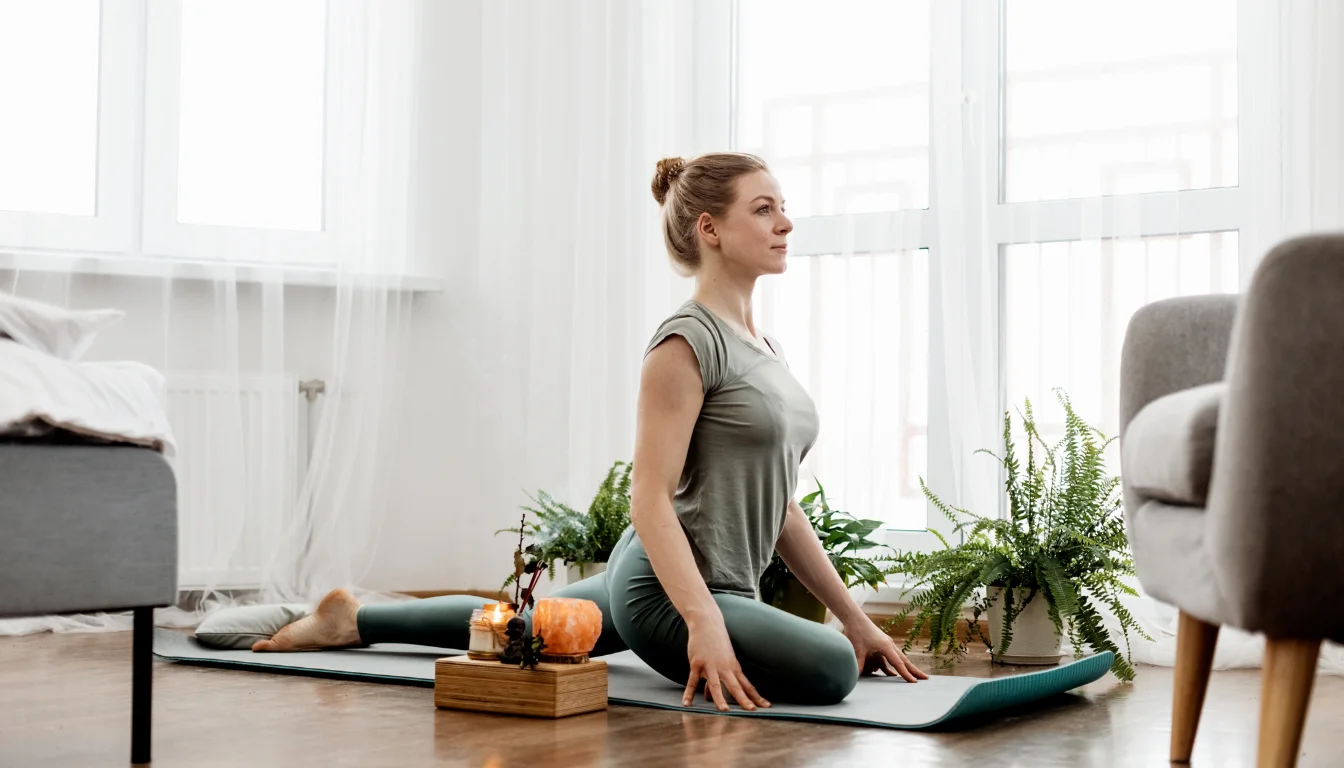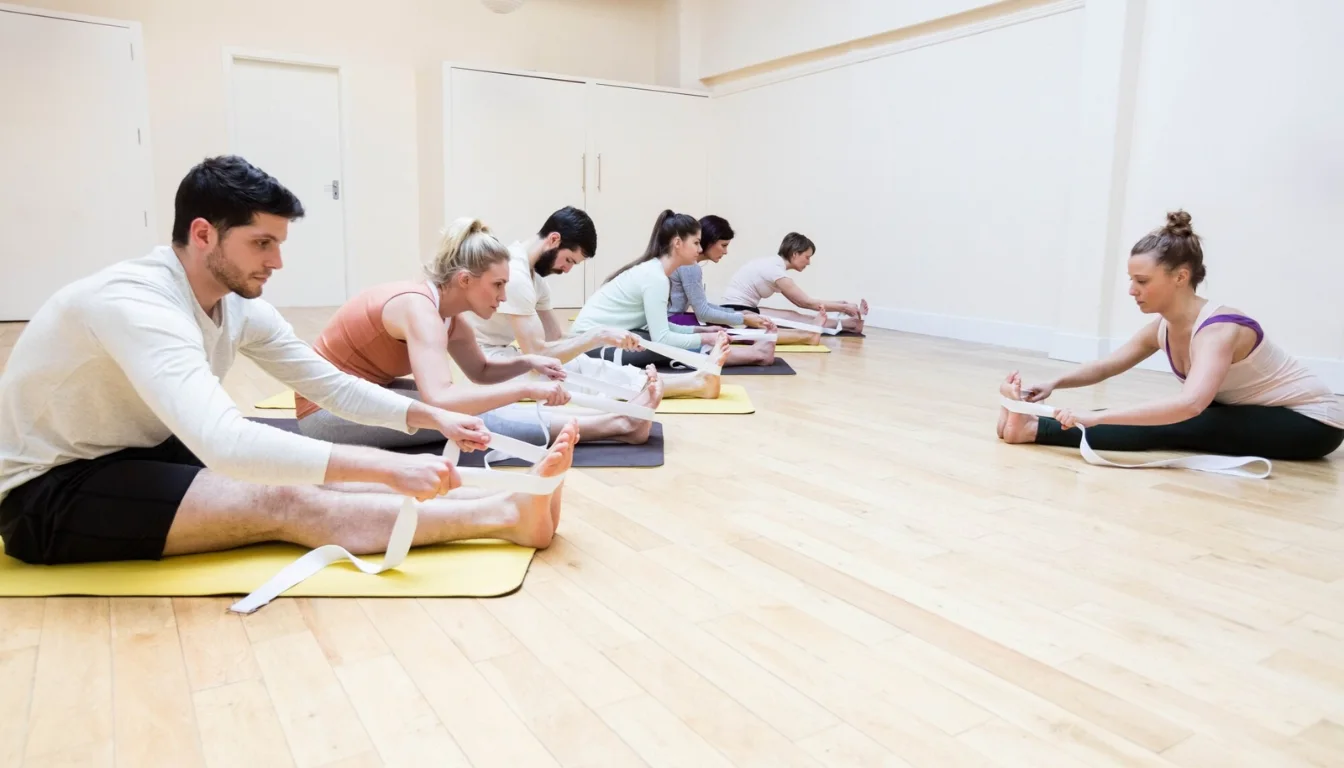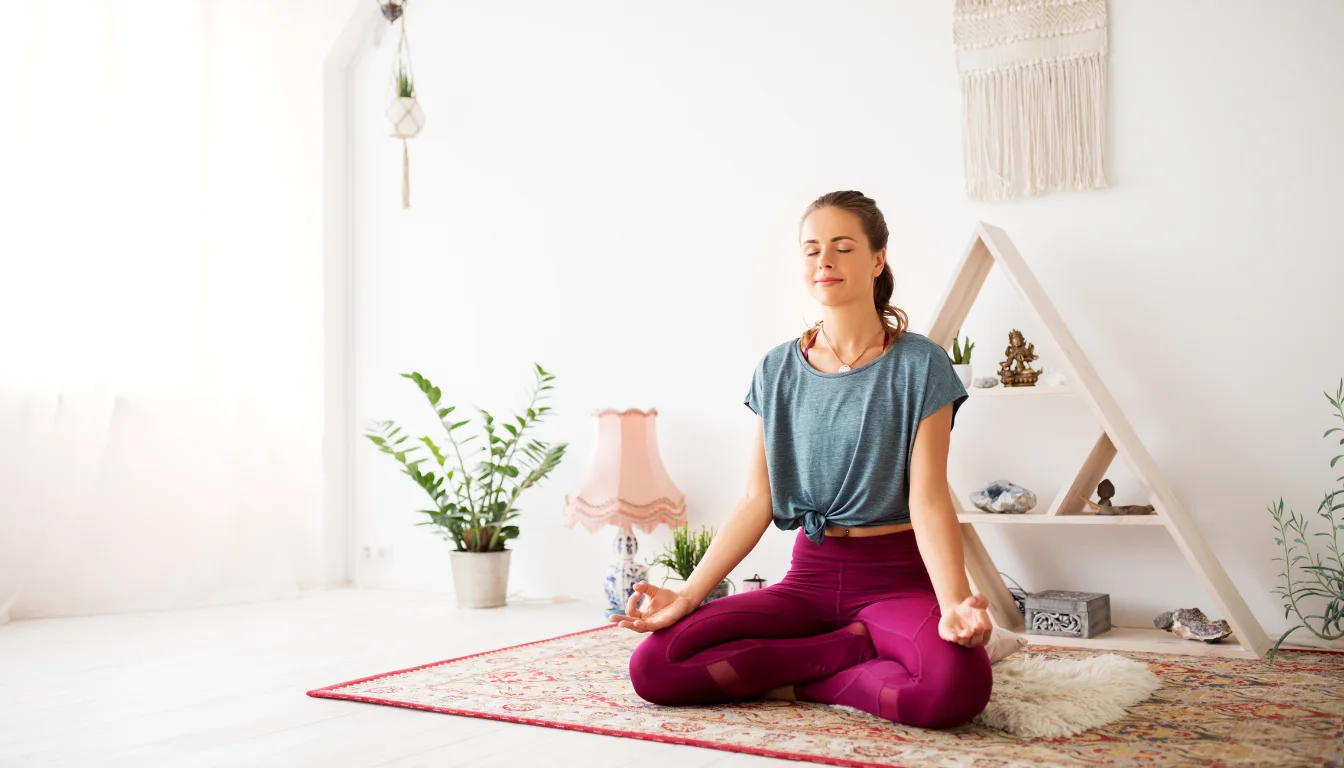My yoga journey started with a simple mat and a need for peace. Like many, I was unsure how to begin at home. Yoga at home is incredibly easy to start.
Yoga is more than exercise; it’s a deep practice from ancient India. About 14% of Americans do yoga, making it very popular. You don’t need fancy gear or lots of time to start.
Yoga teacher Jason Crandell says home practice doesn’t have to be like studio classes. Even 10 to 15 minutes a day can improve focus and productivity. The most important thing is to be consistent.
Your practice can be as short as 2 minutes or as long as 90 minutes. The goal is to find a routine that works for you. Yoga welcomes everyone, no matter the space.
Yoga is about connecting with your body, breath, and self. Be patient and kind as you start. Your yoga journey is unique and will grow with each breath.
Understanding the Benefits of Home Yoga Practice
Yoga has changed how we view personal wellness. A home yoga practice brings physical and mental growth. It goes beyond regular exercise. Just 10 to 15 minutes daily can make a big difference in your health.
Practicing yoga at home has special benefits. It’s perfect for those who want flexibility and personal wellness plans.
Physical Benefits
A regular home yoga practice offers great physical benefits:
- Enhanced flexibility and muscle strength
- Improved body balance and coordination
- Better posture and body awareness
- Potential weight management support
Yoga workouts can help manage chronic pain. They also reduce injury risk by building core strength and improving body alignment.
Mental Benefits
Home yoga practice also boosts mental health:
- Stress reduction and emotional regulation
- Enhanced focus and mental clarity
- Improved self-awareness
- Development of mindfulness skills
Regular yoga can be a strong tool for managing anxiety. It also boosts daily productivity.
Creating Your Dedicated Yoga Space

Starting a yoga practice at home? The right space is key. You don’t need a huge room or a perfectly calm area. Even a small, quiet spot can become your yoga haven.
The COVID-19 pandemic has changed how we do yoga. Many now practice in living rooms and bedrooms. Your yoga space should be:
- Free from clutter
- Quiet
- Comfortable temperature
- Big enough for a yoga mat
Having the right props can make your space better for yoga. Here are some must-haves:
Pro tip: Even a small corner of a room is fine. The important thing is to be consistent and make a space that encourages you to practice.
Remember, your yoga at home space is about creating a personal sanctuary, not achieving perfection.
Yoga instructors like Margi Young show us that practice can be flexible. Your space can adapt to your life and living situation.
How to Start a Home Yoga Routine

Starting a home yoga routine can seem daunting, but it’s not. Begin with small steps and aim for consistency. My own experience showed that it’s not about being perfect. It’s about showing up for yourself, even if it’s just for a few minutes a day.
Every breath matters when starting a home yoga routine. You don’t need to spend hours to see benefits. Most yoga experts suggest starting with short, doable sessions.
Setting Realistic Goals
Setting achievable goals is key for a successful morning yoga practice. Here are some practical tips:
- Start with 5-10 minutes daily
- Focus on mastering 3-5 basic poses
- Practice at the same time each day
- Be gentle with yourself if you miss a day
Basic Practice Structure
A typical beginner yoga routine should include:
- Warm-up: Gentle stretches to get your body ready
- Main sequence: 3-5 foundational poses
- Cool-down: Relaxation and breathing exercises
Remember, consistency trumps intensity in your yoga journey.
By taking small, sustainable steps, you’ll turn morning yoga into a joy. It will nourish both your body and mind.
Essential Yoga Poses for Beginners

Starting a beginner yoga routine can change your body and mind. Easy yoga poses are great for beginners. They help build strength, flexibility, and focus. Let me show you some key poses for newbies.
Beginners need foundational poses to feel confident and aware of their body. Here are some important poses for your routine:
- Mountain Pose (Tadasana): A basic standing pose that improves posture and focus
- Child’s Pose (Shishuasana): A gentle pose that calms the nervous system
- Downward Facing Dog (Adho Mukha Svanasana): A classic pose that stretches many muscles
- Cobra Pose: Strengthens arms and opens the chest
- Tree Pose: Boosts balance and core strength
When doing these poses, hold each for 5 full breaths. Use props to help with alignment and safety. Yoga is about learning and growing, not perfection.
Yoga is like learning a new language – it takes time, patience, and consistent practice.
Start with 5-minute sessions, holding each pose for about 60 seconds. As you get more comfortable, you can do longer and more complex poses. Always listen to your body and adjust poses as needed.
Read also: How Long to Hold Yoga Poses for Beginners
Building Your Practice Progressively

Starting a home yoga practice needs a careful and slow start. It should feel welcoming, not too much. Begin with a plan that lets you grow at your own speed.
Understanding your body’s needs is key to a lasting yoga practice at home. Here’s a weekly plan to help you grow your yoga:
- Week 1-2: Foundation Building
- Choose 4-5 poses you feel comfortable with
- Practice for 10-15 minutes each day
- Pay attention to how you align your body
- Week 3-4: Skill Expansion
- Add 2-3 new poses to your routine
- Practice for 20-25 minutes
- Try simple Sun Salutations
- Week 5-6: Sequence Development
- Make a flow that feels right to you
- Practice for 30-40 minutes
- Include different versions of poses
Your yoga practice at home is a personal journey. Listen to your body and be kind to yourself. Celebrate every small win. Being consistent is more important than being perfect.
Yoga is not about touching your toes. It’s about what you learn on the way down.
Common Challenges and Solutions

Starting a beginner yoga routine at home can feel daunting. Many people find it hard to stay consistent and motivated. About 50% of people struggle with distractions when practicing yoga at home.
Let’s look at some common problems you might face while starting your home yoga routine:
- Motivation Challenges: Feeling uninspired or overwhelmed is normal
- Time Management: Balancing practice with daily responsibilities
- Physical Limitations: Adapting poses to your current fitness level
- Space Constraints: Creating a dedicated yoga area
Practical solutions can help you overcome these challenges. Setting realistic goals is key. Studies show that planning your sessions can make you 70% more likely to keep practicing. Even 10-15 minutes a day can improve your focus and sense of space.
Remember: Your yoga at home practice is personal and unique to you.
Don’t get discouraged if it’s tough at first. Scheduling yoga time and preparing the night before can boost your practice by about 50%. Start with 4-5 simple poses and build your confidence slowly.
The most important thing is to be kind to yourself. Being self-compassionate can lead to better connections and well-being. Your home yoga journey is about making progress, not being perfect.
Conclusion
Starting a home yoga practice is more than just learning poses. It’s about finding a personal path to wellness. My journey showed how yoga at home can be flexible and transformative. You can tailor sessions to fit your schedule, making it accessible to everyone.
Studies show that regular practice boosts physical and mental health. Just 10-15 minutes a day can lead to more flexibility, less stress, and better overall health. The best part is, yoga at home adapts to your life, whether you’re busy or new to fitness.
Being committed is crucial. Begin slowly, be kind to yourself, and remember that progress is not about being perfect. Use online tools, join digital yoga groups, and keep a journal to track your progress. As you delve deeper into your practice, you’ll find strength and inner peace.
Your wellness journey is unique and personal. Shape, explore, and enjoy your yoga path, one breath and pose at a time.
Disclaimer: This information is for educational purposes only and is not a substitute for medical advice. Please consult a healthcare professional before beginning any new exercise program. This post may contain Amazon or other affiliate links.






